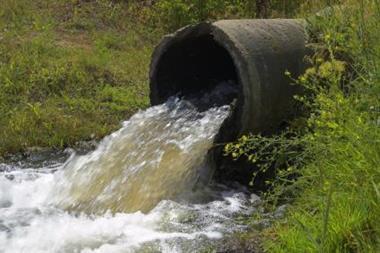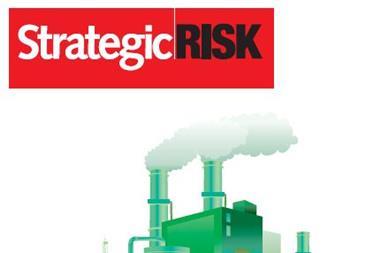Many companies are completely unaware of the potentially ecologically damaging products and methods they employ, making it difficult to ensure they are covered for all environmental eventualities

Companies’ ignorance of environmental regulations was one of the key drivers for improving insurance products in this sector and many companies still suffer from a lack of understanding. “There is somewhat of an education problem, as sudden and accidental pollution cover may provide less cover than risk managers think,” says AXA Corporate Solutions senior casualty underwriter, UK, Grant Le Sage.
In the UK, the Bartoline case of 2003 underlined the financial risks of being uncertain of public liability insurance, and it justified the implementation of further legislation. Bartoline manufactures adhesives and packs hydrocarbons but after a fire at its East Yorkshire site in May 2003, the company faced a £600,000 clean-up bill.
Bartoline made claims to its insurance company relating to the fire but was denied a pay-out for clean-up costs as this was not covered by the policy. “In the Bartoline case, as the river wasn’t owned by anyone the public liability policy didn’t trigger to pay for the clean-up of the river,” says Marsh environment practice leader Cliff Warman.
Toxic sludge
Another major event that had an impact on environmental liability insurance was the ecological disaster in Hungary in 2010. “One of the biggest issues that came out of the Hungarian toxic sludge case is what to do when the company has no money or insurance to pay for damages. This begs the question of whether compulsory insurance would be a good idea, but commentators have suggested that now is not the time for this approach,” notes Polestar UK group risk manager Gary Marshall.
Commentators will tell you insurance for environmental liability has vastly improved in recent years. “We have a situation where, except in a few high-risk cases, if a company wants to insure itself it can,” Le Sage says.
But many of the policies involved depend on the information companies can provide to underwriters. “From a technical point of view, the risk is to do with the release of harmful substances from explosions and accidents but also through long-term leakages, which often happen at operational sites,” says AXA MATRIX Risk Consultants liability loss prevention consultant Hans-Peter Koslowsky.
Policies have gone from being something you’d need to clean something up to being truly business-based.”
Cliff Warman, Marsh
Insurance becomes more viable if the company provides more information. “It’s clearly much easier now for companies to cover their environmental exposures using insurance; the cover can be expensive so it depends on your experience, loss history, who you are and how much information you can give,” Marshall says.
“The insurance market has been proactive in looking at the types of coverage clients need. Policies have gone from being something you’d need to clean something up to being truly business-based,” Warman adds.
Large companies tend to have the means to measure their impact on the ecosystem and effectively manage most of their liabilities. For any significant risks left over, large companies tend to have the funds to be able buy any insurance products that they may need. But this isn’t the case for small companies.
“Many smaller companies won’t even have a list of the chemical products they use, of the quantities or even the kind of storage they use, so they can’t help the underwriters quantify the risk. There is not a level playing field for all companies regarding the access to insurance for their environmental liability,” says Ferma environmental working group chair Pierre Sonigo.
To reduce their exposures, smaller companies can hire an environmental consultant to help identify their exposures. “It’s a good idea for small to mid-sized companies to spend a couple of days with an expert, who will make recommendations - and it’s not too expensive,” says Sonigo.
Many smaller companies won’t even have a list of the chemical products they use, of the quantities or even the kind of storage they use, so they can’t help the underwriters quantify the risk.”
Pierre Sonigo, Ferma environmental working group
Smaller companies can also use open source software to get insight into exposures. For example, Google Earth can be used to spot open bodies of water or settlements that could be exposed to pollution from a factory.
Companies’ exposures in this context are changing because new products and technologies bring about an evolution in their liabilities. A good example of this is nanotechnology, which is being used in an increasingly large number of products. “Nanotechnology will have an impact on the environment that we can’t measure yet,” Sonigo comments.
Corporate governance is also key to defining a company’s exposures and insurance premiums. AXA Corporate Solutions environmental expert Sylvie Monereau says: “By analysing a company’s governance, we focus especially on the integration of its corporate environmental responsibility, in terms of organisation, policy and strategy.”
Hungarian toxic sludge: The facts
- In October 2010, a flood of toxic slurry was released from a reservoir at an aluminium plant in what has been described as Hungary’s worst environmental disaster.
- The accident happened in the town of Ajka and claimed the lives a dozen people after more than a million cubic metres of industrial waste flooded over surrounding towns and villages and contaminated rivers.
- Hungary’s government declared a state of emergency and initially estimated the clean-up would take at least a year and cost tens of millions of euros.
- Aon has said the unfolding environmental disaster should serve as a warning about the strength of new environmental liability laws. In addition, both Munich Re and Hannover Re have said they expected their share of any claims to be negligible.
- Environmental group World Wildlife Fund claimed the reservoir may have been leaking as far back as June.



















No comments yet